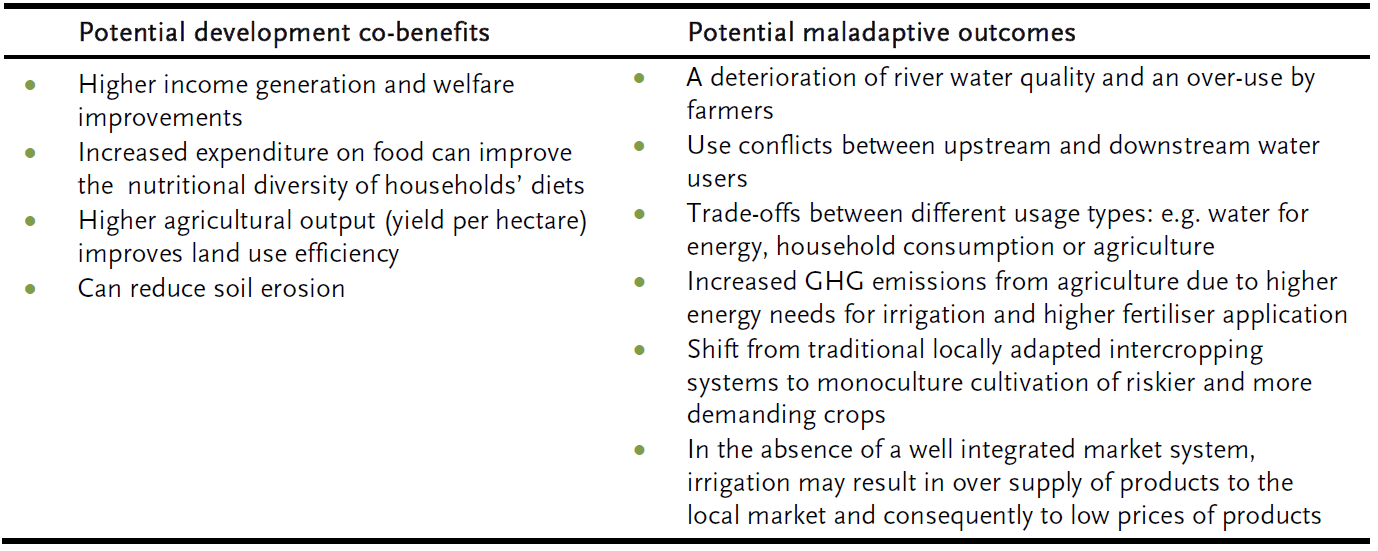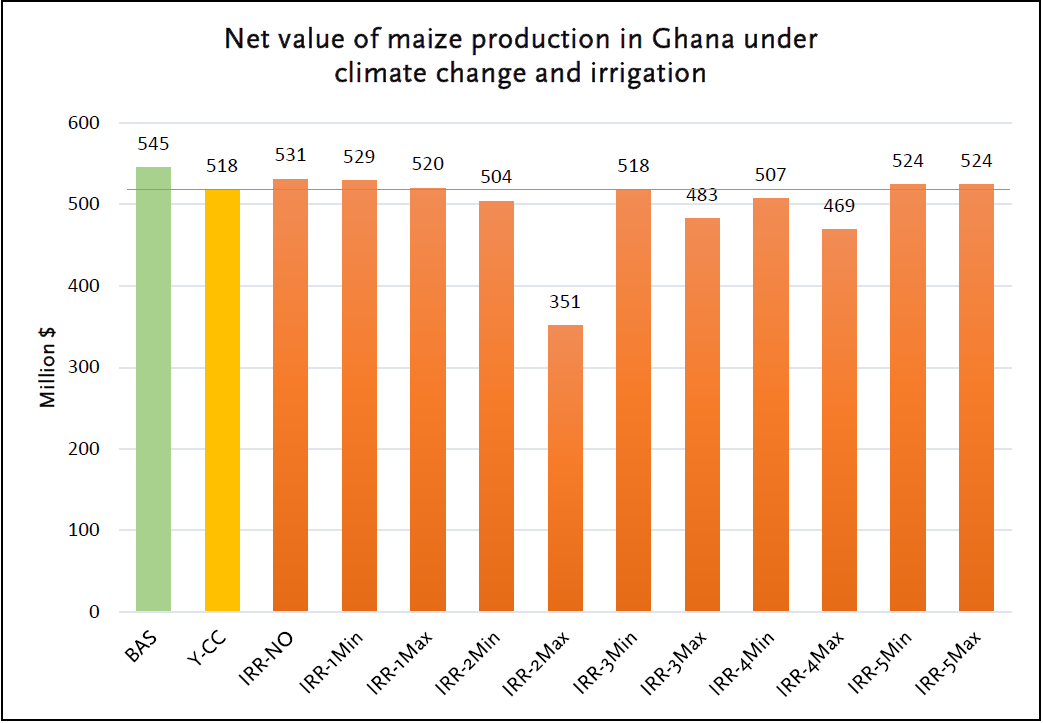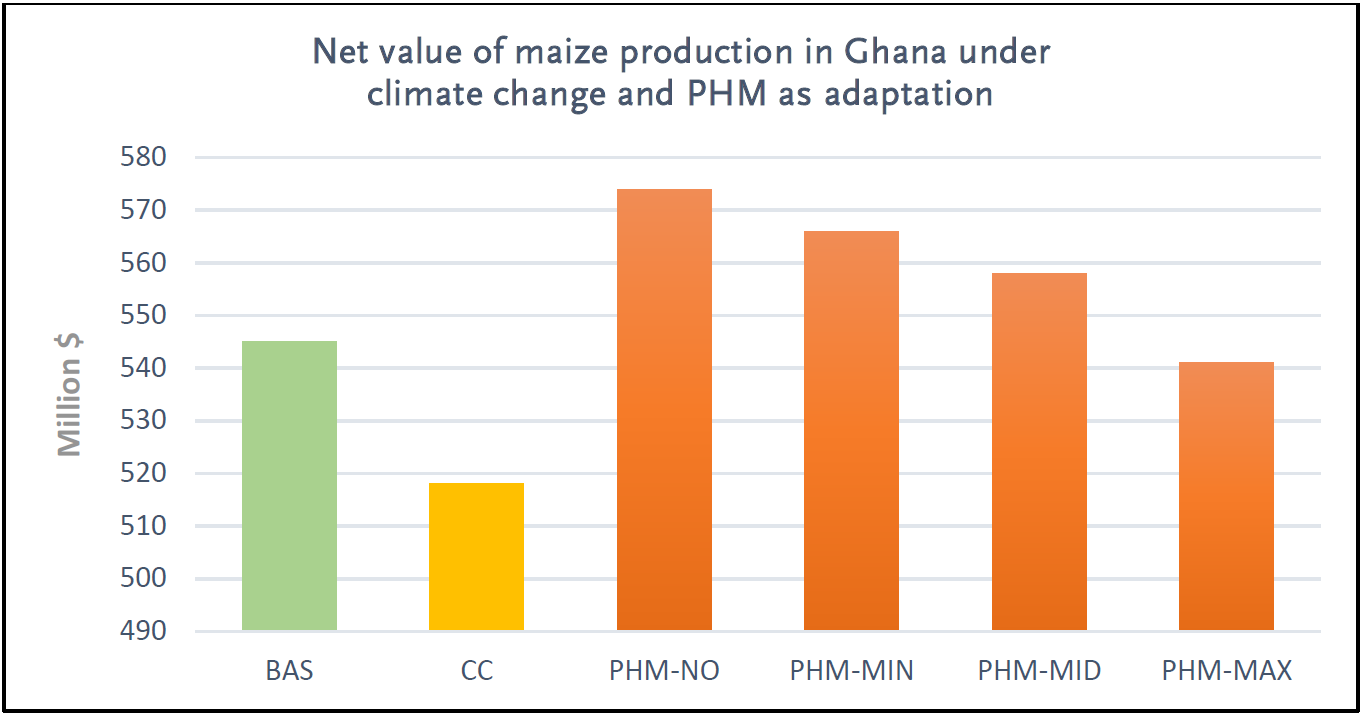Improved crop management, such as using improved seeds, applying fertiliser and shifting the planting dates, has high transformative potential for increasing yields. We used process-based and machine learning techniques to evaluate the effectiveness of different crop management strategies for farmers to adapt to climate change. Our analysis found that increasing soil organic carbon in Ethiopia by 20% has positive effects on crop suitability for all crops (increasing suitability between 2-6%, depending on scenario and crop), especially for maize and wheat (see Figure 2). Enhancing organic carbon produces the greatest suitability increases under RCP8.5 for maize, teff and sorghum (ca. 5% suitability increase) and also has positive mitigation effects. However, shifting the growing season forward by four weeks will result in detrimental effects on suitability of the four crops (wheat, teff, maize and sorghum), with suitability losses of up to 10 % projected, and can thus not be recommended as an adaptation strategy.
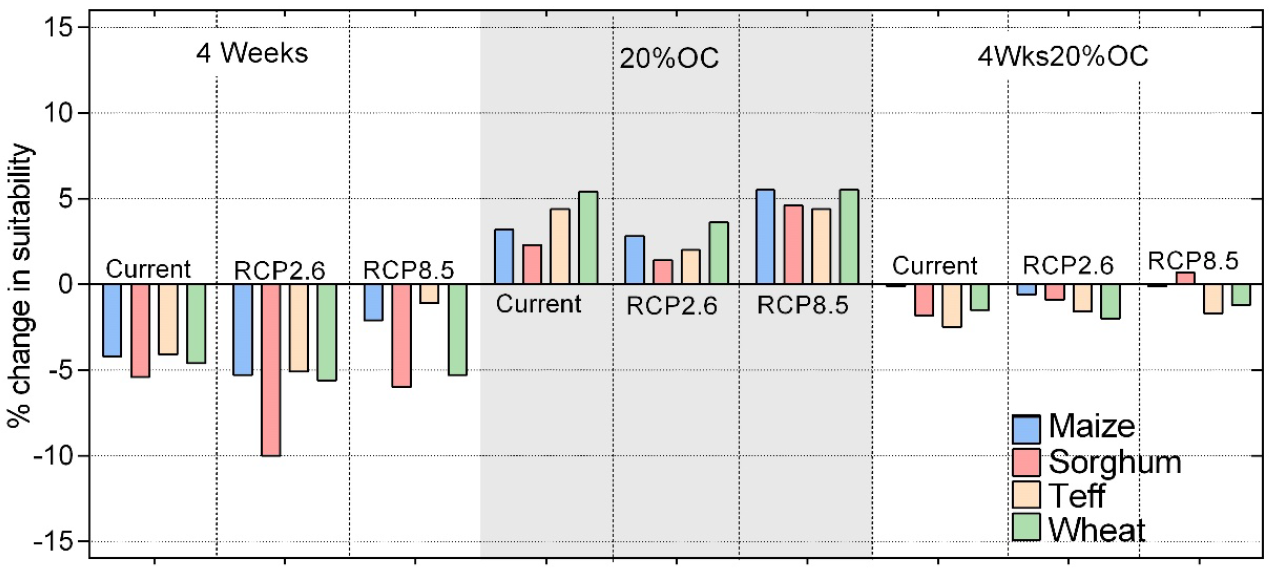
Using the process-based crop model APSIM, we also evaluated the effect of increasing first basal and then top dressing NPK (Nitrogen, Phosphorous, Potassium) fertiliser on maize yield in Ethiopia for all zones (All) and for zones projected to experience yield losses (Loss). Fertiliser application among smallholders in Ethiopia is estimated to be of rather low intensity, some 30-40% of smallholder farmers apply fertiliser (Spielman, Mekonnen & Alemu, 2011). Applying fertiliser is one means for improving lower and more variable yields due to climate change impacts and can thus also be regarded as an adaptation strategy. Yet, increasing synthetic nitrogen fertiliser application will also lead to higher CO2 emissions, a thorough assessment of its usefulness for each specific case is thus needed. The results show that increasing basal fertiliser by 50% will increase yields by between 10 and 200% depending on the zone. At national level, an average increase of 56% for all modelled zones under current climatic conditions is projected (Figure 3).

We also conducted a cost-benefit analysis on one specific crop management strategy, namely a shift in cultivation from maize to sorghum, following the future suitability projections. The analysis shows that in comparison to the no adaptation scenario, the crop switch (adaptation scenario) will be economically beneficial from the year 2041 on (see Figure 4). From then on, the crop switch has a positive return on investment. The following figure shows this development of the net present value (NPV) from 2020 to 2050.
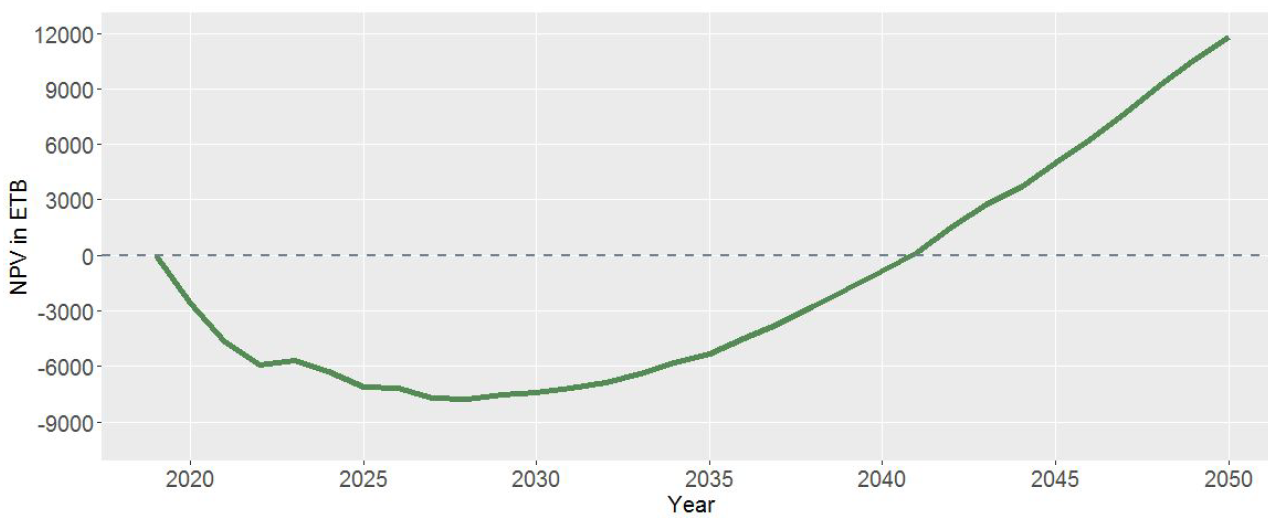
The late break-even point suggests that switching from maize to sorghum cannot be recommended in the near future, but rather in the medium term, once climate change impacts on the crop sector in Ethiopia further materialise.

In conclusion, improved crop management can generally be recommended for adaptation to climate change in Ethiopia, although some strategies require ex-ante evaluation. Shifting planting dates for instance is not necessarily beneficial, but applying more (organic) fertiliser and investing in improved seeds can generally bring about better yields and higher resilience.
References
- Spielman, D. J., Mekonnen, D. K., and Alemu, D. (2011). Seed, Fertilizer and Agricultural Extension in Ethiopia. IFPRI, ESSP II Working Paper 20.




